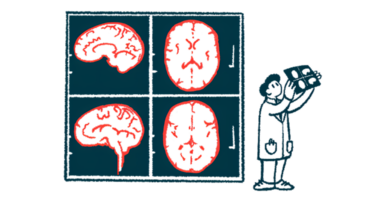Clinical tools can help detect early, subtle symptoms of MS: Study
Assessments may ID signs ‘overlooked’ in patients with minimal disabilty

While subtle symptoms of multiple sclerosis (MS) — like muscle weakness, fatigue, and numbness or unusual sensations — are often overlooked in individuals with minimal disability, more detailed clinical tools can help detect these early signs, according to a new study from Italy.
Moreover, such tools — including wearable devices — can be used to guide interventions to address difficulty with walking, per the researchers.
“Incorporating sensitive clinical assessments may facilitate early identification of subtle deficits, thereby enabling targeted interventions to improve mobility,” the scientists wrote. The team used devices worn on the body, among other easy-to-use clinical tools, to watch for changes in strength and balance in people with minimal signs of disability.
“The assessment of subtle functional deficits in this [patient] population is crucial to track the evolution of impairments and treatments effects,” the team wrote, noting that MS is “characterized by a spectrum of motor, sensory, and cognitive impairments often overlooked in low-disabled people.”
The study, “Beyond EDSS: multidomain impairments are detectable and associated with walking disorders in low-disabled people with multiple sclerosis,” was published in the Journal of Neurology.
Tools to ID early, subtle symptoms of MS ‘still lacking’
In MS, damage to nerve cells in the brain and spinal cord leads to a wide range of symptoms. Not everyone manifests MS in the same way, the researchers noted — though even patients with minimal disability can experience difficulties with walking, sensation, and memory and thinking.
However, if these symptoms are subtle, they may go unnoticed.
“An accurate and comprehensive assessment able to identify early impairments leading to a deterioration in everyday activities is still lacking,” the researchers wrote.
To better understand how common these early symptoms are in low-disabled people with MS, the team carried out a study (NCT06219291) at three sites in Italy. Their work involved 80 patients, all of whom had scores of less than 2.5 on the Expanded Disability Status Scale, known as the EDSS. This clinical tool is commonly used by doctors to measure how disabled someone is from MS, with higher scores indicating more severe disability.
About 80% of the patients had a score of 0-1.5 in the EDSS, indicating no to very minimal disability. A total of 15, or nearly 20%, had a score of two, indicating minimal disability. On average, people with lower EDSS scores had a shorter disease duration and walked significantly farther on the six-minute walk test, which measures how far a person can walk in six minutes.
The EDSS assesses eight functional systems, including pyramidal function, which indicates muscle weakness or difficulty moving the limbs. Slightly more than half of the patients (54%) had abnormal scores on this metric. These pyramidal impairments were three times greater in those with higher EDSS scores.
Nearly one-quarter of patients (23%) also had abnormal scores in sensory function, indicating they may be experiencing numbness or unusual sensations. These impairments were four times greater in those with higher EDSS scores.
Impairments in visual function, which lead to blurred or poor vision, and cerebellar function, tied to tremor or problems with balance and coordination, were less common.
Researchers assessed lower-limb strength via jumping test
To measure lower-limb strength during a jump, the researchers asked patients to start in a squat position with their knees bent about 90 degrees, then jump straight up as high as they could. A sensor, worn on the lower back, measured how high each patient jumped. A group of healthy people of similar age and sex was also included to give reference data for testing lower-limb strength and balance.
Nearly one-third of the patients (31%) had abnormal measures, meaning their jumps were lower than those observed in healthy controls. On average, those with MS did not jump as high as the control group (14.1 vs. 23.2 cm, or 5.6 vs. 9.1 inches), but patients with no to very minimal disability performed better than those with minimal disability (14.9 vs. 11.3 cm, or 5.9 vs. 4.4 inches).
Patients also performed worse than the control group or reference data on measures of touch sensitivity — tested using a thin thread on the foot — as well as fatigue, cognitive speed, and balance. Balance was tested by asking participants to stand on a soft surface with their eyes closed while a sensor measured how much their body swayed.
When the researchers looked at what factors were linked to difficulty with walking, they found that lower limb strength could predict how far a patient could walk on the six-minute walk test. Fatigue — tested using a standard clinical tool called the Fatigue Severity Scale — predicted a patient’s awareness of how well each could walk.
Our study demonstrates that even low-disabled [people with] MS with [a low] EDSS score … report multidomain impairments when assessed with a comprehensive set of specific tools.
Both of these assessments performed better than EDSS scores as predictors, the researchers noted. This suggests that “[easy-to-use] clinical tools assessing strength and tactile sensitivity, as well as fatigue, can be added to routine assessment to better profile [people with MS] in terms of walking endurance and perception,” the team wrote.
Overall, per the researchers, the study’s findings show that sensitive clinical assessments, including those using wearable sensors, are able to better detect early and more subtle symptoms of MS than the EDSS.
“Our study demonstrates that even low-disabled [people with] MS with [a low] EDSS score … report multidomain impairments when assessed with a comprehensive set of specific tools,” the researchers wrote.








